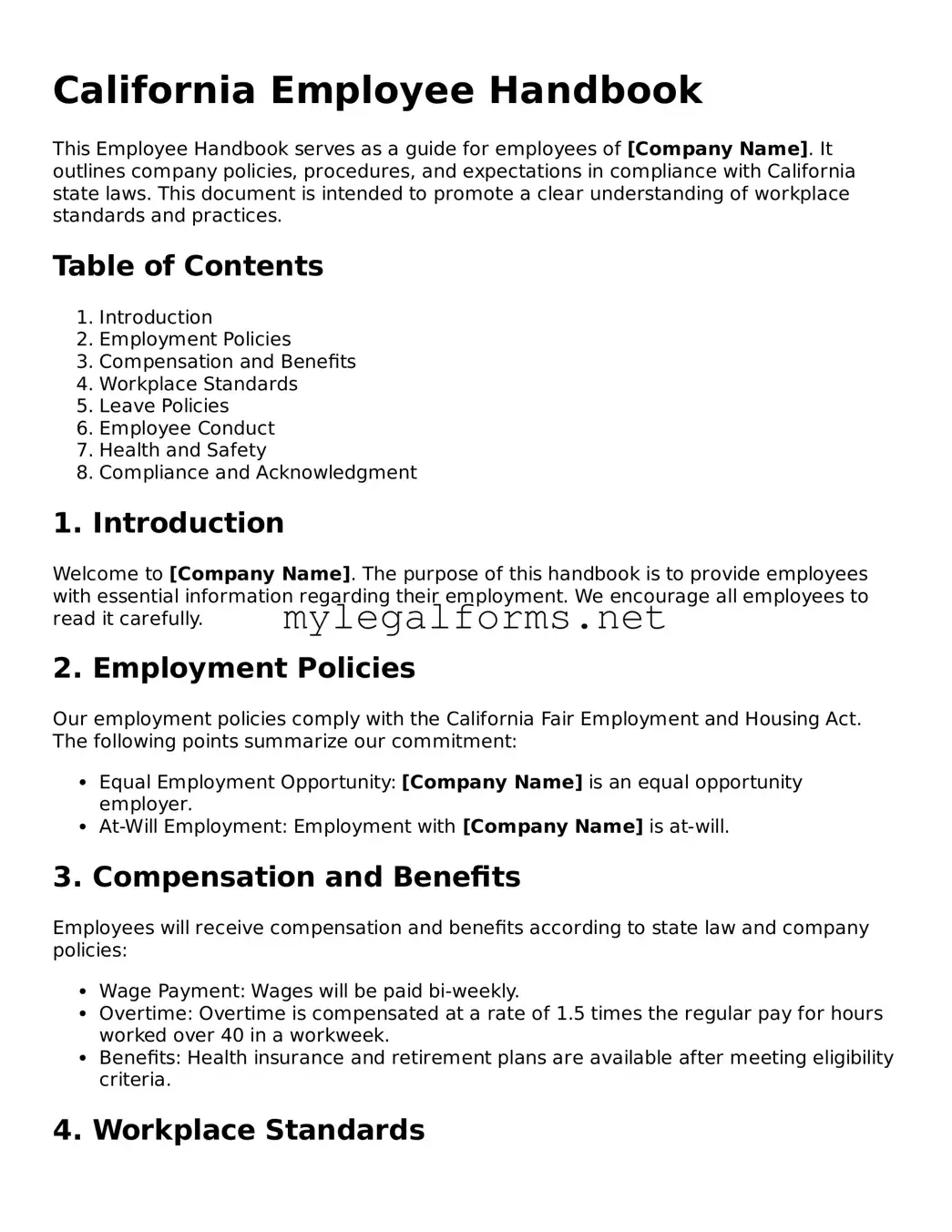California Employee Handbook
This Employee Handbook serves as a guide for employees of [Company Name]. It outlines company policies, procedures, and expectations in compliance with California state laws. This document is intended to promote a clear understanding of workplace standards and practices.
Table of Contents
- Introduction
- Employment Policies
- Compensation and Benefits
- Workplace Standards
- Leave Policies
- Employee Conduct
- Health and Safety
- Compliance and Acknowledgment
1. Introduction
Welcome to [Company Name]. The purpose of this handbook is to provide employees with essential information regarding their employment. We encourage all employees to read it carefully.
2. Employment Policies
Our employment policies comply with the California Fair Employment and Housing Act. The following points summarize our commitment:
- Equal Employment Opportunity: [Company Name] is an equal opportunity employer.
- At-Will Employment: Employment with [Company Name] is at-will.
3. Compensation and Benefits
Employees will receive compensation and benefits according to state law and company policies:
- Wage Payment: Wages will be paid bi-weekly.
- Overtime: Overtime is compensated at a rate of 1.5 times the regular pay for hours worked over 40 in a workweek.
- Benefits: Health insurance and retirement plans are available after meeting eligibility criteria.
4. Workplace Standards
Maintaining a positive and productive work environment is essential. Employees are expected to adhere to the following standards:
- Punctuality: Arrive at work on time.
- Dress Code: Our dress code is business casual.
5. Leave Policies
Leave policies are in accordance with California law:
- Sick Leave: Employees can accrue sick leave at the rate of one hour for every 30 hours worked.
- Family and Medical Leave: Eligible employees are entitled to up to 12 weeks of unpaid leave.
6. Employee Conduct
All employees are expected to conduct themselves professionally:
- Harassment: The company has a zero-tolerance policy for harassment.
- Substance Abuse: The use of illegal drugs is prohibited in the workplace.
7. Health and Safety
The health and safety of employees is paramount:
- Reporting: Employees must report any unsafe conditions.
- Emergency Procedures: Familiarize yourself with emergency exit routes.
8. Compliance and Acknowledgment
Employees must comply with all policies outlined in this handbook. An acknowledgment form will be provided for employees to sign, confirming their understanding and agreement to follow the guidelines.
For any questions regarding this handbook or its policies, employees should contact [HR Contact Name] at [HR Contact Email].
